This article was co-authored by Susannah Kerwin, ANP-BC, HNP. Susannah Kerwin is a board certified Adult Nurse Practitioner in New York, New York. With over 10 years of experience, Susannah specializes in adult primary care, holistic medicine, and women’s healthcare. Susannah holds a Bachelor’s degree from the University of San Francisco. She obtained her MSN from New York University’s (NYU) unique dual degree program combining integrative and allopathic disciplines. Prior to becoming a Nurse Practitioner, Susannah worked for more than ten years as a Registered Nurse in psychiatric and surgical settings. Susannah also serves as an adjunct faculty member for NYU.
There are 15 references cited in this article, which can be found at the bottom of the page.
This article has been viewed 45,655 times.
A cyst is a sac-like structure filled with semisolid material, gases, or liquid. During the monthly cycle, the ovaries normally grow cyst-like follicles which release an egg upon ovulation. Sometimes, these cysts do not get resorbed and can become a problem. The most common ovarian cysts are functional, usually painless, and commonly disappear without any medical intervention within two to three menstrual cycles. Other types of uncommon ovarian cysts can occur. You should always speak to a physician before trying at home treatments for ovarian cysts.[1] If you have spoken to your doctor, there are a few things you can do to help treat your cysts.
Steps
Treating Ovarian Cysts
-
1Wait patiently. Treatment depends on the type of ovarian cyst. Most often, the first course of action is to wait. Functional cysts often disappear on their own within a few cycles. The cysts may be monitored by ultrasounds every one to three cycles to determine if the cysts are getting smaller or not.[2]
-
2Use over-the-counter pain relievers. Pain relievers can help alleviate ovarian pain connected to cysts. Acetaminophen, like Tylenol, NSAIDs, like Aleve or Advil, and aspirin, like Bayer, can help.[3]Advertisement
-
3Take oral contraceptives. Your physician may prescribe oral contraceptives to control and prevent some forms of ovarian cysts. Oral contraceptives are useful in both preventing and sometimes treating ovarian cysts.[4] If you are using the oral contraceptives for birth control, you will probably be put on a regular dose. If the oral contraceptives are being used only to treat the cysts, the dose will be the lowest possible for the shortest period of time.[5]
- Taking birth control pills decreases the risk of some types of ovarian cysts, but carry their own risks. These include an increased risk of cancer of the breast, cervix, and liver, heart disease, and stroke.[6]
-
4Consider surgery. Surgery to treat ovarian cysts is very rare. However, if your cyst looks large, is recurrent, or there are multiple cysts, your doctor may suggest that they be surgically removed. Your doctor may also consider removing the cyst if it causes a lot of pain or other problems. This treatment option needs to be discussed with your doctor.[7]
Using Home Treatments For Ovarian Cysts
-
1Use a heat pad. Heat can be used to relax muscles and relieve any cramping that you may be experience. You can use either a heating pad or a hot water bottle. Place either on your lower abdomen for about 15 minutes. You can repeat this 3-4 times a day.[8]
-
2Try castor oil. Castor oil has anti-inflammatory properties and has been used as a traditional treatment for any kind of menstrual pain. It may improve the blood flow during the menstrual period.[9]
- Start by applying enough castor oil on your lower abdomen to completely coat the area.
- Take a large, clean, cotton towel and cover your lower abdomen. Then, use either a heating pad or a hot water bottle and place it over the towel.
- Leave the heat and towel on for at least 30 minutes. Repeat four to five times a week.
-
3Take a warm bath. A warm bath may help to relax the muscles in your abdomen. Soaking in hot water may also relieve cramping.[10]
-
4Change your diet. Diets full of meat and cheese may cause more ovarian cysts. Instead, eat more fruits and vegetables as part of your regular diet. This may help reduce ovarian cysts.[11]
- A healthy diet also helps prevent obesity, which can lead to more ovarian cysts.
-
5Consider rebalancing your hormones using natural progesterone. Progesterone can inhibit ovulation, thus decreasing the likelihood of ovarian cysts. This approach should only be used when working with your physician. Even though creams are available online, you need to be working with someone to ensure there are no complications.[12]
- Beginning 10 days after the beginning of your last menstrual period (day 10 of the cycle), use a natural progesterone cream. Apply on your inner thigh or behind your knees. Follow manufacturer’s instructions.
-
6Rebalance your hormones using herbs. The following herbs can be used to rebalance the natural hormone levels. When using any of these products, follow manufacturer’s instructions.
- Maca is a root vegetable from Peru that has traditionally been used to treat fertility and energy issues. Maca may be beneficial in balancing hormonal levels. It is commonly used for these purposes in treating menopause.[13]
- Chaste berry is traditionally used to balance reproductive herbs and may help decrease the pain, discomfort, and the size of ovarian cysts. It is being studied for its effects in PMS to reduce pain.[14]
Determining If You Have Ovarian Cysts
-
1Monitor pelvic pain. Pelvic pain may be a symptom of ovarian cysts. This pain is a dull ache that may radiate to your lower back and thighs. The pain can occur just before your period begins or just before it ends.[15]
- The pain can occur only during intercourse.
- The pain can also occur during bowel movements or if there is any pressure on your bowels.
-
2Look for other symptoms of ovarian cysts. Most ovarian cysts are painless and symptomless, and often disappear on their own. These cysts can result in symptoms, however. The symptoms include:[16]
- Nausea, vomiting, or breast tenderness similar to that experienced during pregnancy
- A feeling of abdominal fullness or heaviness
- A feeling of pressure on your bladder. This can cause more frequent urination or difficulty emptying the bladder completely
-
3Be aware of the risk factors. There are a number of possible risk factors for cysts, and these can play a role in any treatment choices. These include:[17] [18]
- A history of previous cysts
- Irregular menstrual cycles
- Beginning menstruation younger than 12
- Infertility or a history of infertility treatments
- Low thyroid function
- Treatment with tamoxifen for breast cancer
- Smoking and use of tobacco products
- Chronic inflammatory conditions
-
4Schedule a doctor’s appointment. You should see your doctor regularly if you have had a history of ovarian cysts. If any of the symptoms listed become severe or interfere with your daily life, call your physician. If you have severe abdominal or lower abdominal or pelvic pain, especially when accompanied by fever or nausea or vomiting, seek immediate medical attention.[19]
- Let your physician know what home treatments you are pursuing and let your physician know if they are helping.
Expert Q&A
-
QuestionCan I shrink ovarian cysts naturally?
 Susannah Kerwin, ANP-BC, HNPSusannah Kerwin is a board certified Adult Nurse Practitioner in New York, New York. With over 10 years of experience, Susannah specializes in adult primary care, holistic medicine, and women’s healthcare. Susannah holds a Bachelor’s degree from the University of San Francisco. She obtained her MSN from New York University’s (NYU) unique dual degree program combining integrative and allopathic disciplines. Prior to becoming a Nurse Practitioner, Susannah worked for more than ten years as a Registered Nurse in psychiatric and surgical settings. Susannah also serves as an adjunct faculty member for NYU.
Susannah Kerwin, ANP-BC, HNPSusannah Kerwin is a board certified Adult Nurse Practitioner in New York, New York. With over 10 years of experience, Susannah specializes in adult primary care, holistic medicine, and women’s healthcare. Susannah holds a Bachelor’s degree from the University of San Francisco. She obtained her MSN from New York University’s (NYU) unique dual degree program combining integrative and allopathic disciplines. Prior to becoming a Nurse Practitioner, Susannah worked for more than ten years as a Registered Nurse in psychiatric and surgical settings. Susannah also serves as an adjunct faculty member for NYU.
Women's Healthcare Practitioner It's really hard to do. Ovarian cysts happen because of the activity of the ovaries, so mainly the treatment for that is going to be birth control because you're shutting down the activity of the ovaries and that allows your ovaries to basically rest and not create ovarian cysts. So that's basically one of the only treatments for preventing ovarian cysts.
It's really hard to do. Ovarian cysts happen because of the activity of the ovaries, so mainly the treatment for that is going to be birth control because you're shutting down the activity of the ovaries and that allows your ovaries to basically rest and not create ovarian cysts. So that's basically one of the only treatments for preventing ovarian cysts.
References
- ↑ https://www.nhs.uk/conditions/ovarian-cyst/
- ↑ http://www.mayoclinic.org/diseases-conditions/ovarian-cysts/basics/treatment/con-20019937
- ↑ http://www.uofmhealth.org/health-library/hw181644
- ↑ https://www.plannedparenthood.org/learn/birth-control/birth-control-pill/how-safe-is-the-birth-control-pill
- ↑ http://emedicine.medscape.com/article/255865-treatment#d13
- ↑ http://www.naturalmedicinejournal.com/journal/2012-05/primary-risks-oral-contraceptives-and-hrt
- ↑ http://www.nhs.uk/conditions/ovarian-cyst/pages/treatment.aspx
- ↑ https://www.nationwidechildrens.org/conditions/ovarian-cyst-and-torsion
- ↑ Franca, C. S., Menezes, F. S., Costa, L. B., Niculau, E. S., Alves, P. B., Pinto, J. B., & Marçal, R. M. (2008). Analgesic and antidiarrheal properties of Ocimum selloi essential oil in mice. Fitoterapia, 79(7-8), 569-573.
- ↑ https://www.nationwidechildrens.org/conditions/ovarian-cyst-and-torsion
- ↑ https://academic.oup.com/jes/article/1/12/1488/4587525
- ↑ http://www.drdach.com/PCOS.html
- ↑ Centre for Reviews and, D. (2011). Maca (Lepidium meyenii) for treatment of menopausal symptoms: a systematic review (Provisional abstract). Maturitas, 70(3), 227-233.
- ↑ Webster, D., Lu, J., Chen, S., Farnsworth, N., & Wang, Z. (2006). Activation of the mu-opiate receptor by Vitex agnus-castus methanol extracts: Implication for its use in PMS. Journal Of Ethnopharmacology, 106(2), 216.
- ↑ https://www.nhs.uk/conditions/ovarian-cyst/
- ↑ https://www.mayoclinic.org/diseases-conditions/ovarian-cysts/symptoms-causes/syc-20353405
- ↑ https://www.mayoclinic.org/diseases-conditions/ovarian-cysts/symptoms-causes/syc-20353405
- ↑ http://www.cancer.gov/about-cancer/causes-prevention/risk/hormones/oral-contraceptives-fact-sheet
- ↑ https://www.nhs.uk/conditions/ovarian-cyst/
About This Article
To treat ovarian cysts, talk to your doctor so they can monitor the cysts and determine if they're serious. The most common ovarian cysts are functional cysts, which will usually go away on their own after a few cycles. In the meantime, you can take over-the-counter pain relievers and use heat to help manage the pain. If your cysts are large, recurrent, or extremely painful, talk with your doctor about having them removed via surgery. To learn how to tell if you have ovarian cysts, scroll down.
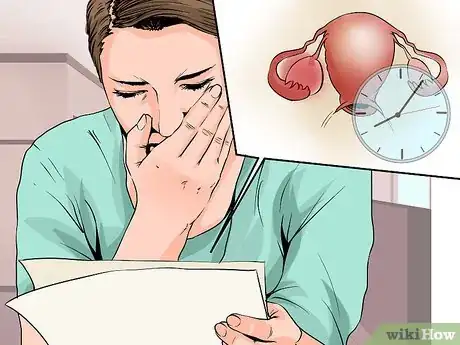

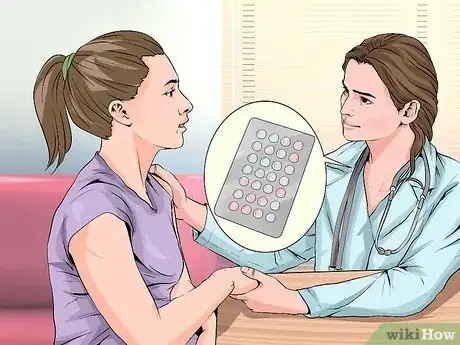

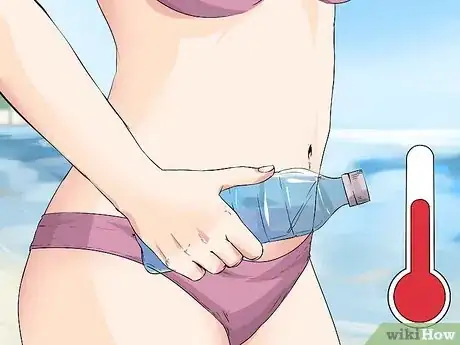

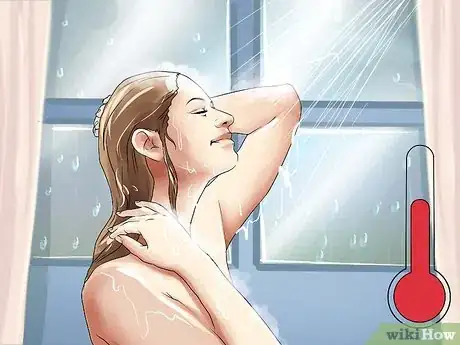
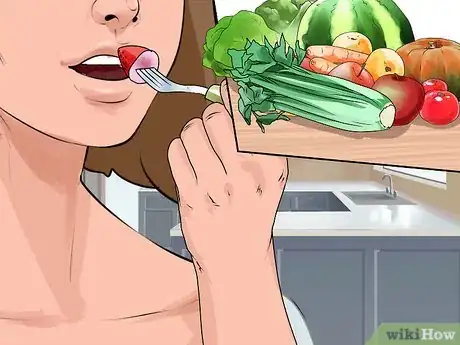
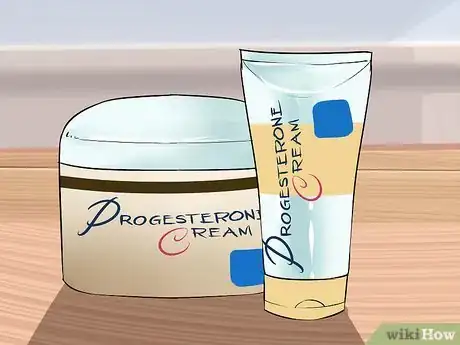
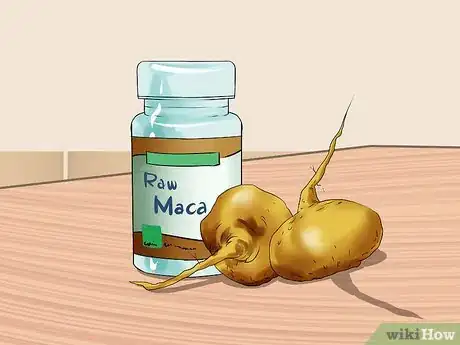

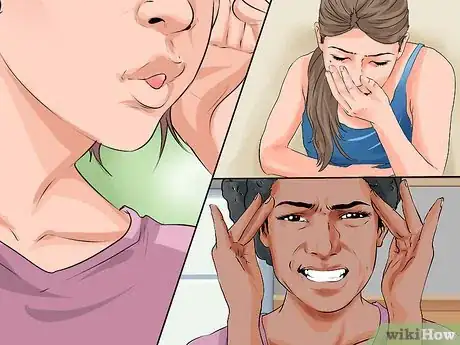

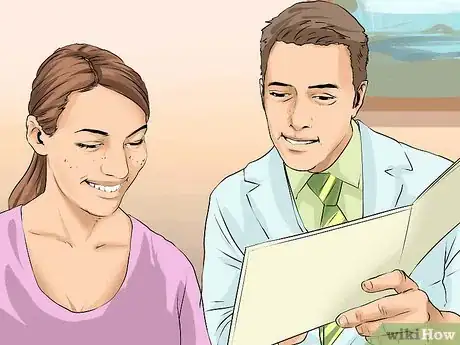



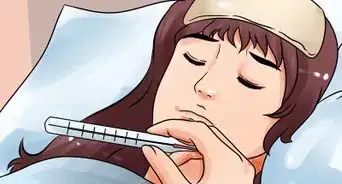
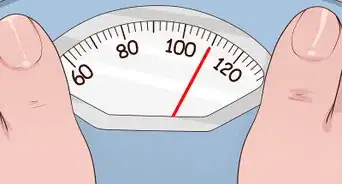
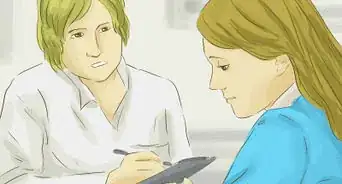

-Step-11.webp)

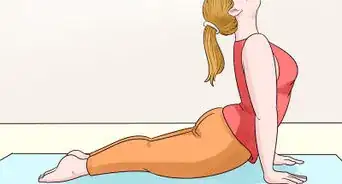
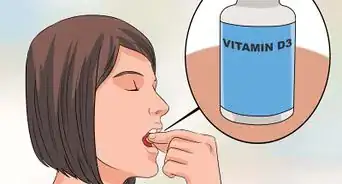
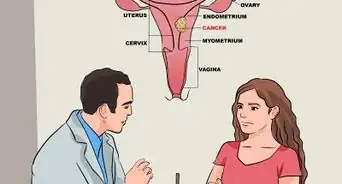










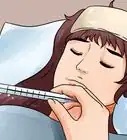



































Medical Disclaimer
The content of this article is not intended to be a substitute for professional medical advice, examination, diagnosis, or treatment. You should always contact your doctor or other qualified healthcare professional before starting, changing, or stopping any kind of health treatment.
Read More...